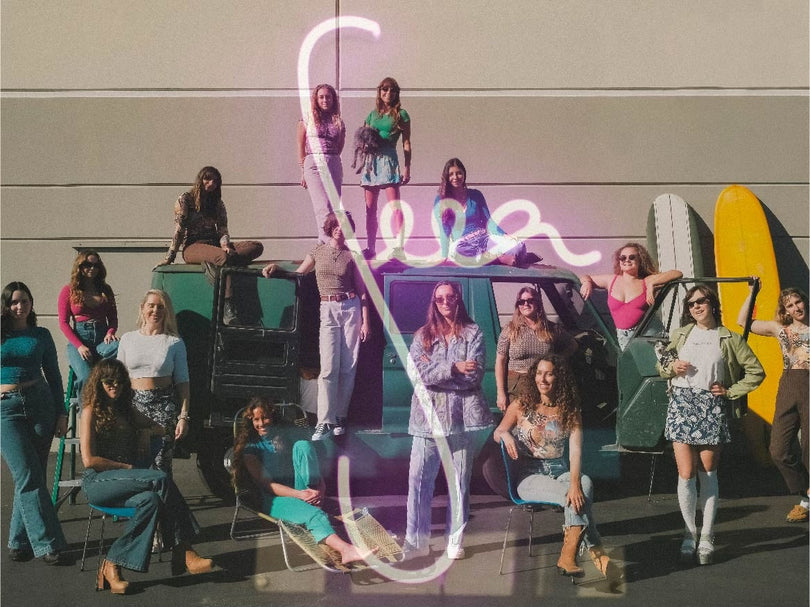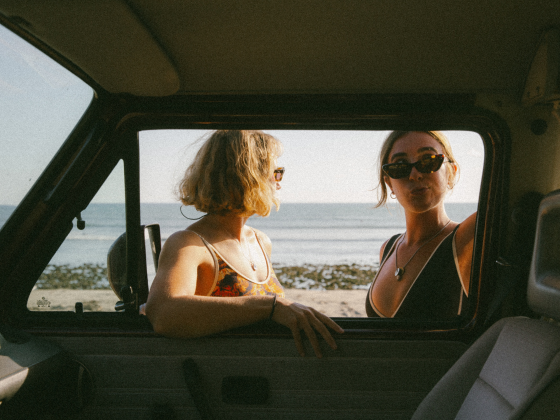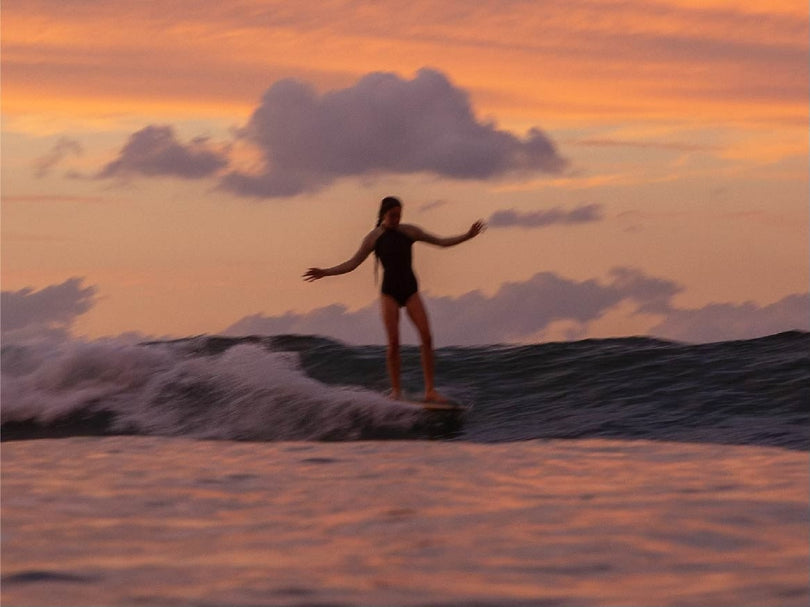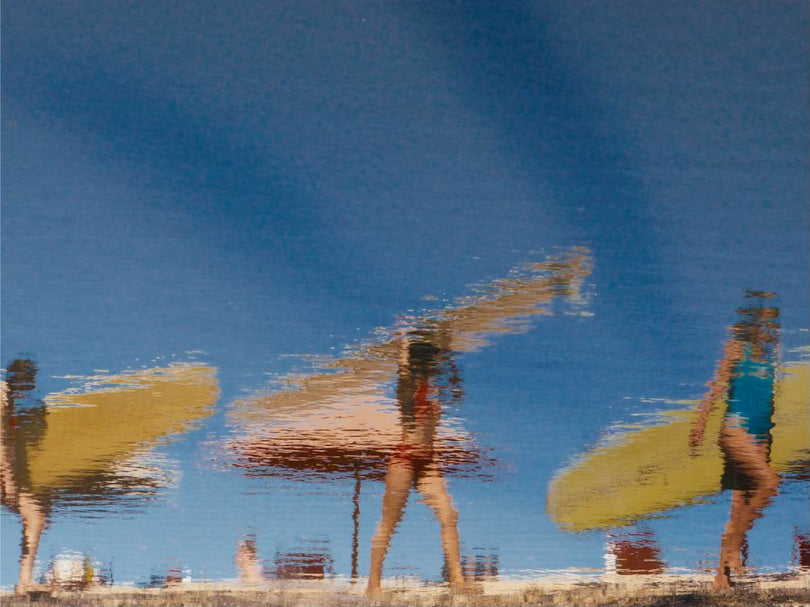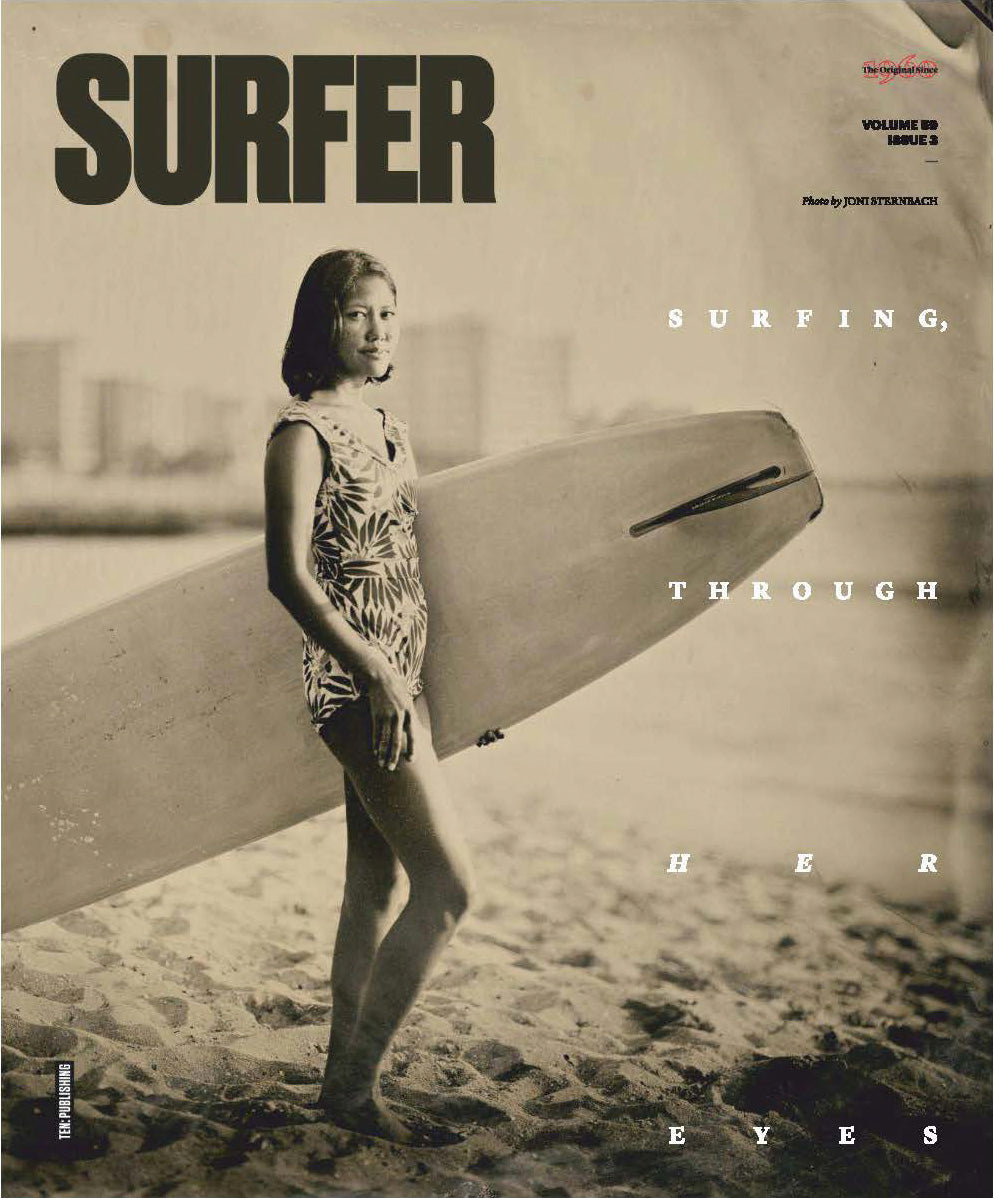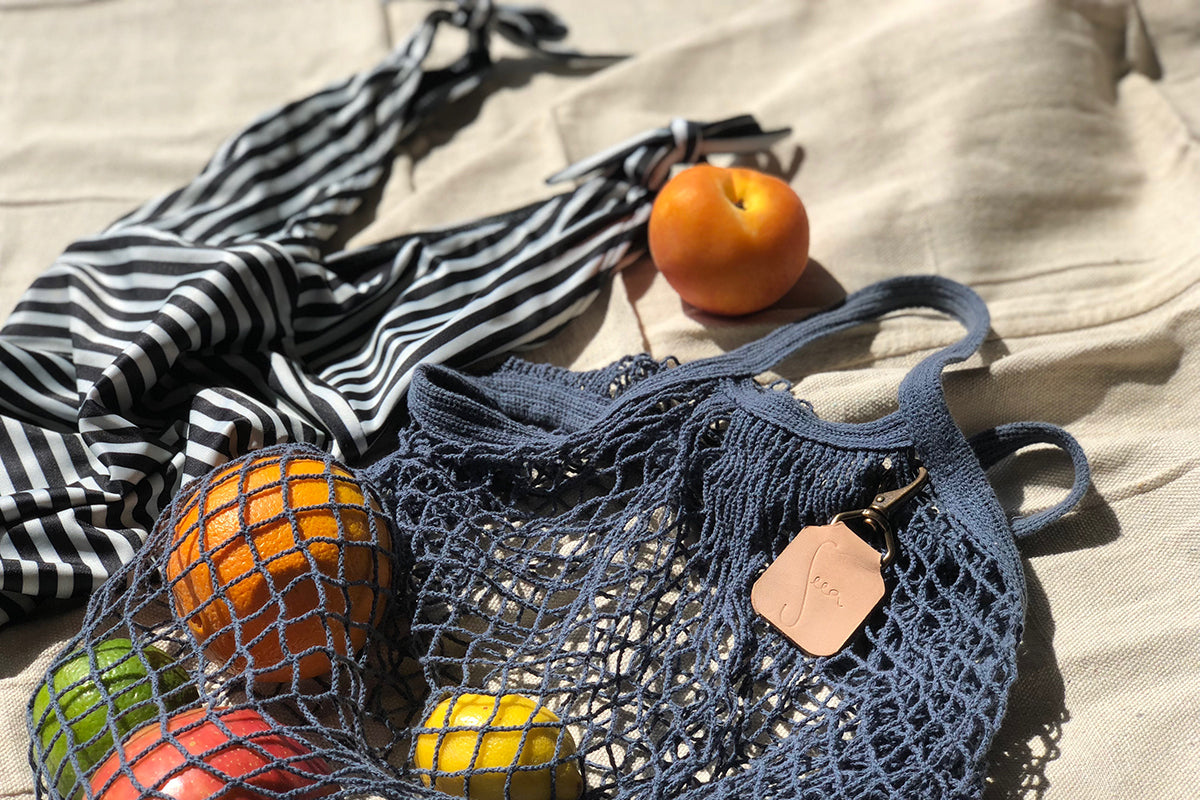
In the grandest act of serendipity, we received the latest issue of SURFER Magazine and discovered Seea on the cover. Kara Akiyama was wearing her Seea Frida One-Piece in a tintype portrait taken by an artist whose work we adore, Joni Sternbach.
Inside the magazine, we found more to be overjoyed about—stories showing the many faces of modern women surfers today, including many of our own Seeababes and ocean amigas.
No one was more surprised than Kara, a non-pro and in her words, "I’m maybe [an] above average [surfer] on my good days. But I grew up surfing and it is a huge part of my life." A film photography enthusiast, Kara was invited to watch the intensive wet plate collodion development process in Waikiki by Joni’s assistant. “Joni shot a few portraits that day, got to me and seemed interested to shoot my longboard that was shaped for me by my dad… Jumped in the water, and that was that. Never expected anything more to come of it,” Kara replied. She adds, "It’s really a cover about Joni who’s the real hero of the story.”
To find out more about how this ambitious package came together, we caught up with Ashtyn Douglas, managing editor at SURFER who curated the issue. Ashtyn lives and breathes surf content—everything from interviewing pros, pitching and writing long-form pieces of journalism, to coming up with captions.
“Bare bones, I get to talk about surfing all day long—which is pretty damn fun,” she says. Sounds like our kind of lady! We chatted about the many voices she wanted to represent and pondered why we envy the next generation of women surfers.
There are a lot of incredible stories in this issue. As you were discussing the subjects to feature, what picture were you trying to paint about the modern women surfer today?
Ashtyn Douglas: We always put a lot of thought and effort into who we profile and showcase each print issue, but to be honest, I think we spent a little extra time planning this one because we really wanted to nail it. We didn’t want this to seem like a marketing ploy or that we were shoving all the female-related content we had into one issue just to check some box. Women surfers are incredibly talented, complex, unique and multi-faceted, so it was really important for us to be as inclusive as possible and not try to pidgeon-hole women in any way.
That’s a tall order for magazine with a limited amount of pages, but we tried to talk to women of many walks of life and varying roles in the surf world. Sometimes in surfing, women are celebrated as novelties or if they surf like men—as males are often seen as surfing’s ideal. But we wanted to take a step back and celebrate women as they are as human beings, as surfers, and as environmentalists—not as how they stack up to men. 

Why was it important to have a women’s issue?
I and the other editors wanted to take a moment to celebrate women. Media—not just surf media—plays a huge role in gender equality and making sure women’s voices are heard just as loudly as men's–and that means including them as subjects or sources on a regular basis (which is something we are actively trying to do). But I also think it’s really cool to sometimes step back and honor only women–especially at this moment in time. Women surfers have never been more talented and empowered than they are today—and we really wanted to showcase the women that have made it that way. Also, right now, both in and out of surfing, women are speaking up and having their voices heard and it feels like positive changes are being made because of that.
As a female editor, what type of direction did you give on the tone and angles of the stories that male editors may not have thought of?
That’s a good question. I’m pretty stoked that I get to work with a great group of men who treat women with respect and as unique individuals—so I think anyone on my team would’ve done a great job tackling the stories I did. That being said, I do think I’m able to relate to other women surfers and photographers on certain levels as I understand what it’s like working and trying to make a name for myself in a male-dominated field. Like I said before, we wanted to showcase a wide range of talents so we chose to highlight different aspects of each personality.
We’re huge fans of Joni Sternbach’s work. She is gracious, passionate, and has a refined eye. What’s the story behind Joni’s image on the cover?
Well, for one it’s an amazing, striking image. Joni is such an amazing artist—and a rad person to boot—so it was really cool getting to display her work in the mag and on the cover. I think our photo editor Grant Ellis (who usually chooses the cover options each month) really nailed this one. I love that she’s looking straight at the camera—it feels powerful. Kara Akiyama, who’s featured on the cover, grew up surfing Waikiki and, like you and I, has a normal day job and just loves surfing. We could’ve easily put a top-tier pro on the cover, but I think we wanted to show that the community of women surfers extends far beyond the highest paid women on tour. Like I said before, I think one of the most important things we wanted to do was be inclusive and paint a portrait of a modern woman surfer.
For Bethany Hamilton’s story, it appears you spent a lot of time with her. Do you think being a woman gives you emotional access that you may not have gotten if you were a guy following her around? How did you want to tell her story in a way that hasn’t been done before?
Yea, this profile was a really special one for me to do. I got to spend a lot of time with Bethany, and I do think being a woman helped with this story in particular. The first time we hung out we were on a boat for 4 days in Baja, and the only time we were able to do sit-down interviews was when the day was over and she had put her son Tobias to bed—when she was definitely tired and I’m sure burnt out on doing interviews. I could be wrong, but I think she was able to relax a bit in front of me. Also, we were able to bond about being a woman in the water and what it’s like balancing a career and motherhood (I have yet to do the latter, so I had lots of questions for her!).
My main goal was to paint her as a human being who is an extremely talented surfer—not as a shark attack victim who overcame limb loss to be really good at surfing again. Her story has been told more times than I can count, but a lot of those stories focus on the shark attack that happened 15 years ago—still celebrating everything she’s accomplished since then, but through the lens of her losing her arm. And I wanted people to see that she’d like the world to move past that. I also wanted to show how she’s dealt with fame and celebrity. She’s a really laid-back, fairly introverted personality, so being famous doesn’t really come natural to her. She even told me that learning how to deal with being famous for losing her arm was actually way harder than physically losing her arm. I thought it was important to show that side of her as well, because I think we’d all be shocked if we became famous overnight for something like that.



The Female Gaze story features women photographers talking about their unique point of views. What do females bring to the table behind the camera and behind the scenes of telling stories?
It’s funny, this was the same question I asked many of female photographers we included in that feature. I think one of my favorite responses came from Jianca Lazarus—an incredibly talented photographer from South Africa who now lives on the North Shore of Oahu. She told me, “I try to fool myself into thinking that gender doesn’t matter, but you create from who you are. And gender is an essential part of your identity.” I really liked that.
I can’t speak for all the women photographers in the Female Gaze, but I know when I first started telling stories I’d tell myself (and sometimes others) that being a woman doesn’t affect my outlook and perspective on stories at all. But I think it does. Being a woman doesn’t hold me back from doing anything my male colleagues can do, but being a woman (and the experiences I’ve had as a woman in the lineup) gives me a different voice and perspective by nature.
With a limited number of print pages, I’m sure there were other stories that you wanted to represent but didn’t make the cut. Will you be covering more female stories in future issues?
Absolutely. Being inclusive and giving a voice to people who aren’t always heard from in the surf world is important to us. And we’ll definitely continue to interview and profile women surfers in the future—we’re already working on a couple pieces right now, which I’m really excited about because people seem to respond well to women-related content. The feedback we’ve received after this issue hit newsstands has been really positive. People I don’t know have been messaging me on Instagram, telling me how much the issue inspired or touched them, which is one of the greatest things an editor can hear. I was really hoping both men and women would be stoked on the issue—and it seems like that’s happening. Also hearing that people read this issue “cover to cover” also makes me excited—especially with people’s limited attention spans nowadays [haha].
What excites you about the newest generation of female surfers (10-14-year-olds) that will inherit the lineup? How do you see their perception of what it means to be a woman surfer that's changed in this generation from the era that Stephanie Gilmore’s generation grew up in?
Honestly, I envy the newest generation of female surfers. Obviously, Steph Gilmore’s generation is undeniably talented, and each one of them (on the ‘ CT, in the big-wave arena, in the longboarding sphere and beyond) have done so much for women’s surfing. But this next generation has the privilege of being able to look up to an entire group of women who makes surfing what it is. I think if you can see yourself in and identify with someone who does what you want to (be a pro surfer, or just a surfer in general), then the easier it is for you to believe in yourself.
There are obviously many reasons why we need diverse lineups and diverse voices in surf media, but I think one byproduct of including more women online and in print is that younger girls will feel that they belong and their voices matter too. My hope is that the next generation of women surfers feel appreciated and respected in lineups—and that being a woman shouldn’t keep them back from anything. I think—or at least I hope—the future generation of female surfers doesn’t see their gender as something that keeps them back from doing what they want to do—be it surfing big waves, trying new, progressive maneuvers, and just taking up the style of surfing they feel like suits them best.
Thank you Ashtyn!
Go to SURFER.com to pick up a copy of the magazine.

